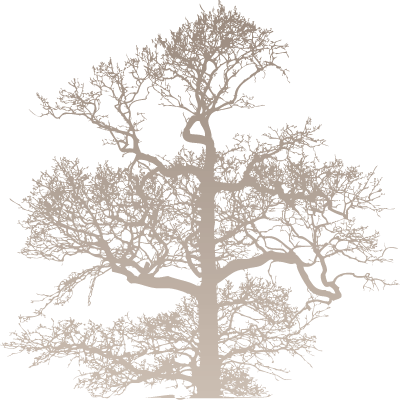Byzantine Catholic
Cleveland, Cuyahoga County, Ohio
Lakewood, Cuyahoga County, Ohio
Parma, Cuyahoga County, Ohio
Brecksville, Cuyahoga County, Ohio
Parma (Cleveland), Cuyahoga County, Ohio
Youngstown, Mahoning County, Ohio
Barberton, Summit County, Ohio
Lorain, Lorain, Ohio
Orthodox
Lakewood, Cuyahoga County, Ohio
Byzantine Catholic
Holy Ghost Byzantine Catholic Church
Cleveland, Cuyahoga County, Ohio
Closed in 2009
UPDATE: The Bishop Emil Mihalik Center was re-located to the church and the Byzantine Catholic Culture Center is now located at Holy Ghost Church.
Image from Cleveland State Library Special Collections
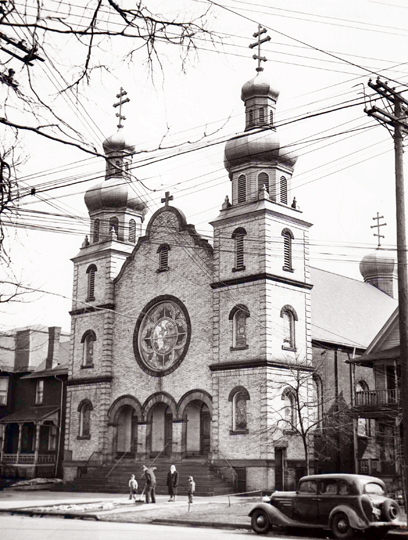
Holy Ghost Greek (Byzantine) Catholic Church was organized in 1909. Initially, members met at Justis Hall on Literary Avenue until construction of the church was finalized in 1910. Prior to 1900, immigrants began arriving from the Carpathian Mountain regions of the former Austro-Hungarian Empire (present day Slovakia, Southern Poland and Western Ukraine) to Cleveland. The majority of the immigrants who began Holy Ghost were Carpatho-Rusyn. The immigrants were mostly laborers and found employment in the various mills and factories. After they became settled, the focus turned to constructing a Greek Catholic church to serve their spiritual needs. Two Greek Catholic churches were previously established in Cleveland. Unfortunately, these Greek Catholic churches were a long distance from where members of Holy Ghost resided. Father Emil Burik, pastor of St. John’s Greek Catholic church, obtained permission to discuss the possibility of building a new church on the West Side of Cleveland.
Parish House - Image from Cleveland Historical Society
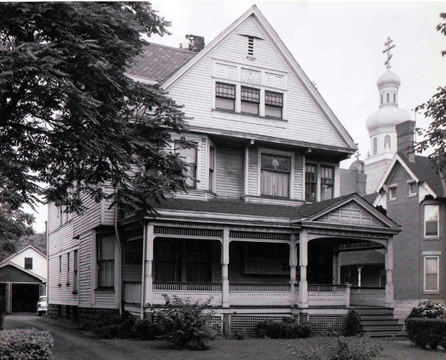
On October 8, 1909 Holy Ghost Greek Catholic church was incorporated by charter by the State of Ohio. Services initially were held at the Star Turn Hall. Later, property was purchased at West 14th Street and Kenilworth Avenue for $17,650.00. On February 6, 1910, Very Reverend Stephen Jaritzky of Hazleton blessed the cornerstone of the new church. Assisting Father Jaritzky were Father Auibrem Hazega, Father Miron Lukacs and Father Emil Burik, Pastor of Holy Ghost. The new church cost $15,000.00. Also, approximately twenty plus acres was purchased and dedicated for a cemetery. The cemetery land in Parma cost $6,000.00. The original membership of the parish consisted of 50 families. Within a short period of time the number of families soared to over four hundred. In 1918 Father Joseph P. Hanulya was installed as pastor of Holy Ghost where he served until 1962. During the 1918 Spanish Flu epidemic, an Orphanage was established to provide a home for children who lost their parents. Holy Ghost became the first home in the United States for the Sisters of St. Basil the Great who managed the orphanage until it closed in 1923.
During the 1920’s more property was purchased by the church and in 1924 three bar crosses were installed on the church towers. Also, during this period the iconostasis, a true artistic work of art, was installed. Hand crafted in Budapest Hungary, it cost $6,133.66 and was brought to America and reassembled on site.
Images from Cleveland Historical Society


Classes in religious instruction and the Rusyn language were held for children in the church basement. By this period, Holy Ghost had expanded to over nine hundred families. As time progressed many improvements were made to the church and property. New lighting fixtures, marble altars, pews and updated mural paintings were added. Holy Ghost Church was rededicated on September 11, 1955. On February 17, 1957 construction began for a parochial school across from the church. The school was dedicated on October 19, 1958 and the first graduating class was held in June, 1960.
During the period of Holy Ghost’s Golden Jubilee celebration in 1959, the membership had increased to over three thousand people. Unfortunately, parish growth reversed itself when many individuals began to move to suburban areas. By 1970 Holy Ghost made the decision to build a new church on their cemetery property. To assist with these construction costs, the parochial school was sold. Many other changes took place as the existing rectory was dismantled to provide a larger parking area and the former convent area became the new rectory.
In 1969 tragedy struck when during a terrible storm one of the church towers collapsed. The parish at this time had limited finances and it was decided not to undertake repairs. The second tower was removed and the crosses were set upon both tower foundations. Later, funds were collected to restore the towers and in November of 1978, the old copper crosses were replaced with new stainless steel domes on new towers. In the years leading up to 1984 the marble altars were replaced by wooden altars and the entire interior of the church was remodeled to restore its original beauty. The church interior has many artistic aspects such as stained glass windows with life size figures, a large rose window which dominates the façade and is supported by three towers. These towers are graced on the exterior by onion domes and three bar crosses. Holy Ghost had many organizations such as a choir, boy’s baseball team, a Sokol for gymnasium sports, the Strong Set Club, a basketball team and a church social club. The Liturgy/Masses were held in the Slavonic language up until the 1970’s.
Some of the Clergy who served Holy Ghost were: 1909 – 1913, Rev. Emil Burik, 1911 – 1918, Rev. Michael Mitro, 1913, Rev. Sigsmund Brinsky, 1913 – 1916, Rev. Cornelius Zapotoczky, 1916 – 1918, Rev. Nicholas Duda,1918, Rev. August Komporday, 1921, Rev. Emil Burik, 1926, Rev. Demetrius Yackanich, 1949 – 1950, Rev. Michael Hrebin, 1950 – 1951, Rev. Stephen Luzetsky, 1951-1952, Rev. Myron Horvath, 1952 – 1953, Rev. Paul Waslus, 1956, Rev. Raymond Misulich, 1957 – 1958, Rev. John Borodach, 1958 – 1959, Rev. Myron Badnerosky.
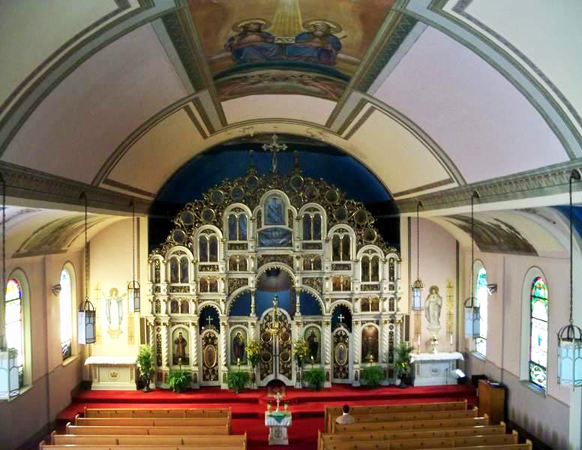
On November 1, 2009, it was with great sadness that Holy Ghost Greek (Byzantine) Catholic Church in Cleveland’s Tremont neighborhood was permanently closed. At the final Divine Liturgy Bishop John Kudrick of the Parma Byzantine Eparchy and the Rev. Steven Koplinka, pastor of St. Mary Byzantine Catholic Church in Cleveland along with 200 members celebrated the last service in this historic Carpatho-Rusyn church. In the past few years membership numbers declined to the point where only nine families were parishioners. It was impossible for these nine families to financially support the entire church. The difficult decision was made to permanently close the parish. At the emotional conclusion of the service for all who were in attendance, two parishioners tearfully handed over to their bishop the keys to the church, the parish accounting books and a relic of a saint that had been venerated at Holy Ghost Greek (Byzantine) Catholic Church for years.
At this point the altar was desanctified and then, the church was permanently closed as a house of worship.
In memory of this beautiful Carpatho-Rusyn church, if anyone has photos, information, anniversary books, etc., please contact us so that we may add to this page and keep the memory of Holy Ghost Greek (Byzantine) Catholic Church alive for future generations to learn of its remarkable and distinguished history.
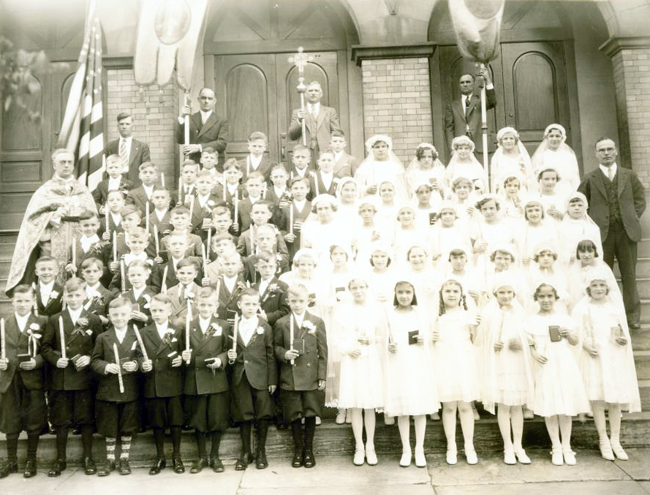
Video of
The Resurrection of Holy Ghost Church
Utube Video Final Mass November 1, 2009
Note: At the end of the video the Vicna Lampa (Eternal Light) was extinquished, and the altar was desanctified.
Saint Gregory the Theologian Byzantine Catholic Church
Lakewood, Cuyahoga County, Ohio
History
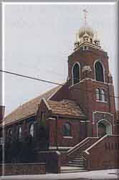 Saint Gregory the Theologian Byzantine Catholic church was originally organized in September of 1905. Many immigrants who settled in Lakewood wished to have a church that reflected their customs and heritage. Saint Gregory was started to meet that need. It was difficult in the beginning for many to raise the necessary funding to build a church. Due to these financial constraints, the church was not constructed until 1906. Located on Quail Street, this church was built at the heart of the immigrant community. There were many from Eastern Europe of Slavic heritage that came to this area during the turn of the century and beyond. During its early years Saint Gregory’s had no bishop since Rome did not appoint a bishop for Greek Catholics in the United States. The church had no choice but to be placed under the Roman Catholic Bishop of Cleveland, the Most Reverend Ignatius F. Horstmann, D.D. The members worked hard and pooled their resources to realize their dream. Two lots on Quail Street and Thrush Street were purchased to serve as the site of the church. After all construction was completed, the new wooden church was solemnly blessed and dedicated on July 30, 1906. This was the beginning of Saint Gregory’s church in Lakewood.
Saint Gregory the Theologian Byzantine Catholic church was originally organized in September of 1905. Many immigrants who settled in Lakewood wished to have a church that reflected their customs and heritage. Saint Gregory was started to meet that need. It was difficult in the beginning for many to raise the necessary funding to build a church. Due to these financial constraints, the church was not constructed until 1906. Located on Quail Street, this church was built at the heart of the immigrant community. There were many from Eastern Europe of Slavic heritage that came to this area during the turn of the century and beyond. During its early years Saint Gregory’s had no bishop since Rome did not appoint a bishop for Greek Catholics in the United States. The church had no choice but to be placed under the Roman Catholic Bishop of Cleveland, the Most Reverend Ignatius F. Horstmann, D.D. The members worked hard and pooled their resources to realize their dream. Two lots on Quail Street and Thrush Street were purchased to serve as the site of the church. After all construction was completed, the new wooden church was solemnly blessed and dedicated on July 30, 1906. This was the beginning of Saint Gregory’s church in Lakewood.
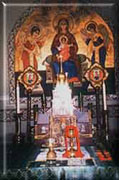 During the years 1906 to 1922 the parish grew. The members were proud of their new church, which they had sacrificed to erect. In 1922 the parish house on Quail Street was purchased along with another house that in the future would be sold. In June of 1922 the Reverend Basil Volosin was installed as a permanent priest to serve St. Gregory’s. During 1925 a brick church was constructed to replace the older wooden one. This second church was blessed and dedicated on August 8, 1926 by His Excellency, Bishop Basil Takach, D.D., who had been installed as Bishop for the newly created Pittsburgh Exarchate. During the year 1927 a new priest, Reverend George Hirtz succeeded Father Basil Volosin. Time moved on and during September of 1955 the Reverend Nicholas Pavlik, O.S.B. was appointed to serve St. Gregory’s. The golden jubilee of Saint Gregory’s was celebrated with fond memories of their former history and with hopes for a bright future. The golden jubilee was held on October 16, 1955 and during this celebration the newly remodeled interior was blessed. Expansion was always a high priority at the church and on November 23, 1958 the church undertook yet another building campaign to secure funding to build a school and recreational building. This new building was constructed on the three lots at Madison and Cohasset Avenues, two of which a former rector, Father George Hritz had purchased. Father Bernadine Hvizdos had purchased another former rector the third lot previously. Upon completion, the school was blessed and opened on June 17, 1962 by Most Reverend Nicholas T. Elko, D.D.
During the years 1906 to 1922 the parish grew. The members were proud of their new church, which they had sacrificed to erect. In 1922 the parish house on Quail Street was purchased along with another house that in the future would be sold. In June of 1922 the Reverend Basil Volosin was installed as a permanent priest to serve St. Gregory’s. During 1925 a brick church was constructed to replace the older wooden one. This second church was blessed and dedicated on August 8, 1926 by His Excellency, Bishop Basil Takach, D.D., who had been installed as Bishop for the newly created Pittsburgh Exarchate. During the year 1927 a new priest, Reverend George Hirtz succeeded Father Basil Volosin. Time moved on and during September of 1955 the Reverend Nicholas Pavlik, O.S.B. was appointed to serve St. Gregory’s. The golden jubilee of Saint Gregory’s was celebrated with fond memories of their former history and with hopes for a bright future. The golden jubilee was held on October 16, 1955 and during this celebration the newly remodeled interior was blessed. Expansion was always a high priority at the church and on November 23, 1958 the church undertook yet another building campaign to secure funding to build a school and recreational building. This new building was constructed on the three lots at Madison and Cohasset Avenues, two of which a former rector, Father George Hritz had purchased. Father Bernadine Hvizdos had purchased another former rector the third lot previously. Upon completion, the school was blessed and opened on June 17, 1962 by Most Reverend Nicholas T. Elko, D.D.
Upon the death of Father Nicholas Pavlik in February 1977 Reverend Hilary Benedik, O.S.B.M. was appointed a temporary administrator of St. Gregory’s. The church was without a permanent rector for over a year but finally, in September of 1978, Father John S. Kachuba was installed as rector. During 1990 Father Kachuba left for Saint Stephen’s church in Euclid, Ohio and the church again had a temporary administrator, Father Michael Hayduk. In September 1992, Monsignor Basil Smochko was appointed rector. The success of Saint Gregory’s was due to the devotion and dedication of her members. Many sacrificed to keep the church running and gave financial support even when times were difficult. The 90th Anniversary of the church was celebrated on October 29, 1995. A solemn liturgy of which the main celebrant was the Most Reverend Andrew Pataki, J.C.L., D.D., Epharch of Parma, Ohio, was attended by large numbers of members, invited friends and clergy.
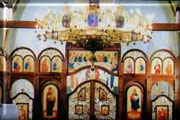 After the liturgy, a banquet was held in Saint Gregory’s Hall. The members of Saint Gregory’s had come far in their first 90 years as a church. The trials and sacrifices that were made in the beginning now were recalled and celebrated in a fully functioning and beautiful church. It is to the credit of the original members that all this was accomplished. Due to their grand vision of having a church to worship in their faith and heritage, the present day members have a beautiful church for religious observances and to honor their traditions. The present members have unselfishly given of their time, talents and finances to make St. Gregory’s a beautiful edifice for the Glory of God. The present church is a magnificent building with red brick exterior and a main golden cupola (dome) surrounded by four smaller ones on a main tower. These cupolas offer a striking view from many directions on Quail Street. The iconostasis construction is simple, yet regal. The icons with partial gold backgrounds that support the two-tiered iconostasis offset its soft brown wood color. A superb piece of art, the main golden chandler, offers exquisite beauty in an atmosphere well suited for prayer and the worship of God.
After the liturgy, a banquet was held in Saint Gregory’s Hall. The members of Saint Gregory’s had come far in their first 90 years as a church. The trials and sacrifices that were made in the beginning now were recalled and celebrated in a fully functioning and beautiful church. It is to the credit of the original members that all this was accomplished. Due to their grand vision of having a church to worship in their faith and heritage, the present day members have a beautiful church for religious observances and to honor their traditions. The present members have unselfishly given of their time, talents and finances to make St. Gregory’s a beautiful edifice for the Glory of God. The present church is a magnificent building with red brick exterior and a main golden cupola (dome) surrounded by four smaller ones on a main tower. These cupolas offer a striking view from many directions on Quail Street. The iconostasis construction is simple, yet regal. The icons with partial gold backgrounds that support the two-tiered iconostasis offset its soft brown wood color. A superb piece of art, the main golden chandler, offers exquisite beauty in an atmosphere well suited for prayer and the worship of God.
Saint John’s Byzantine Catholic Cathedral
Parma, Cuyahoga County, Ohio
Anniversary Book Photos Courtesy of Father Michael Hayduk
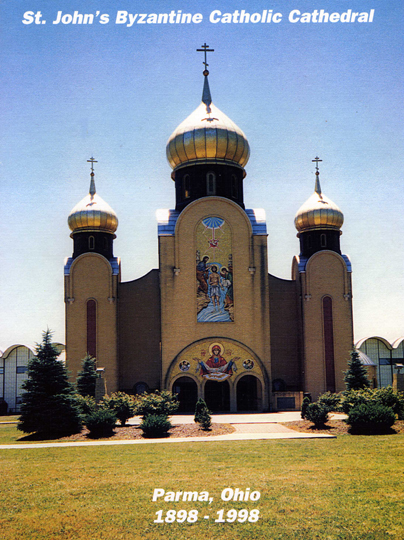
During 1898 many people from the former Austro-Hungarian Empire began to immigrate to Ohio. After becoming established, these new residents of the United States wanted to build a Greek Catholic Church to worship in their ancestral faith. Plans were made for this endeavor while holding Mass at Saint Joseph’s Roman Catholic Chapel on East 23rd and Woodland Avenue in Parma. After enough funds were collected a hall was rented at East 22nd and Woodland Avenue. Father Peter Keselak attended to the spiritual needs of the growing congregation. On August 31, 1901 a church building and home were purchased at the corner of East 22nd and Scovill Avenue. The members gave generously and the church was renovated to accommodate Greek Catholic services. The home attached to the property was established as a rectory for the church. Various priests served the expanding congregation during the early years. Some of these priests were among the first Greek Catholic clergy to arrive in America. Those who served at Saint John’s were Father Victor Popovich, Father Vladimir Molchany, Father Gabriel Chopey, Father Alexius Noval, Father Nestor Volensky and Father Eugene Volkay. Again, the church became too small to hold the many parishioners and during the tenure of Father Stefan Makar, a new church on Scovill Avenue was constructed. In 1915, Father Victor Popovich became the resident pastor and then in 1917 Father Leo Levicky was appointed to serve Saint John’s.
Ikonostasis in the old church
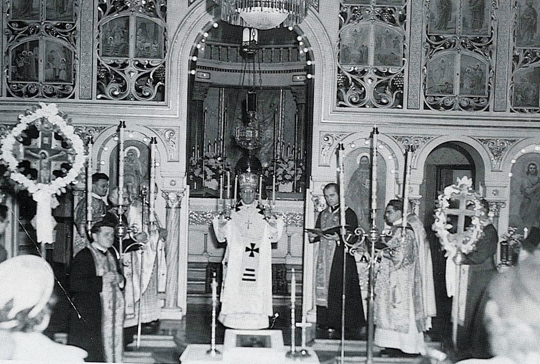
During 1918 a priest shortage resulted in Saint John’s having no permanent pastor. Due to the war years, no Greek Catholic priests were immigrating to the United States. Those who were studying for the priesthood in Roman Catholic seminaries in America had not completed their seminary training. During these difficult days, Saint John’s suffered many setbacks without having a pastor, financial hardships and unfortunate lawsuits. The lawsuits created much turmoil and were instigated by a segment of the congregation. These individuals wanted to desert their ancestral faith and take the church which the devout Greek Catholic faithful had paid for with them. Realizing the need for urgent action, the Apostolic Administrator of the Greek Catholic Church in America, Monsignor Gabriel Martyak, sent a talented and respected priest, Father Stephen Gulyassy, to restore order at Saint John’s. In March, 1922, Father Stephen arrived and immediately began to work. While he was only ordained three years, he was 31 years old and had a great sense of administration and organization. Father Stephen gave courage to his congregation, stabilized the parish finances and fought to stop the agitation of outside influences. Seeing the need for educational opportunity, he was instrumental in the construction of a Greek Catholic parochial school.
During 1945 Father Stephen purchased a good deal of property at a reasonable price. This property would later become the center of the Eparchy of Parma and the church he served would be elevated to Cathedral status. During his years as pastor, Father Stephen and his devoted parishioners expanded the church, worked together and arrived at a level of financial security. He remained the parish priest for generations to his congregation but sadly, died on January 11, 1966 and did not live to see the elevation of Saint John’s to Eparchy status. After Father Stephen’s death, Father Robert Yarnovitz was installed as pastor on July 26, 1968. In 1969, the parishioners rejoiced as they learned Pope Paul VI established the Metropolitan See of Pittsburgh and created the Eparchy of Parma. The first bishop enthroned was Father Emil Mihalik and Saint John’s was elevated to the rank of Cathedral. Father Emil was consecrated at Saint John’s and the Chancery offices were established. Bishop Emil called upon Monsignor Eugene Chromoga to assist him with the Administration of the new Eparchy. During these years the high school debt which was purchased after the death of Father Gulyassy was paid off. Also, ever mindful of the ethnic history of the Byzantine Catholic Church, a new library was constructed. Later, this was expanded to contain a library and heritage museum.
New Church
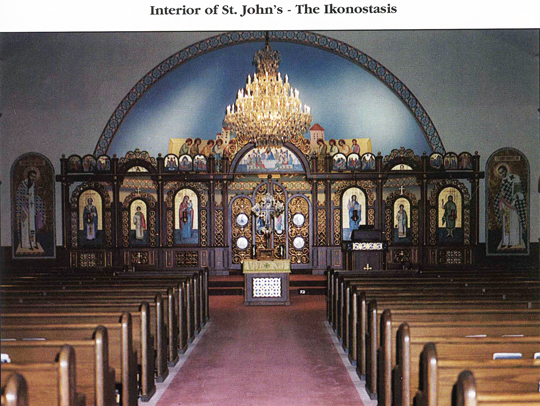
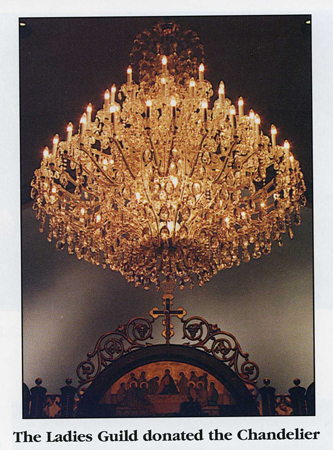
Saint John’s Byzantine Catholic High School served as an outstanding Catholic school that had Byzantine Catholics and students from 52 Roman Catholic churches in the Cleveland area. Sadly, the financial burdens of operation became too great and eventually the school was disbanded. It is of interest to note that Father (later Metropolitan) Basil Schott taught and eventually served as Principal of Saint John’s Byzantine Catholic High School. During 1979, the Chancery offices were relocated to the Cathedral property and on January 27, 1984, Bishop Andrew Pataki was enthroned as the second Bishop of the Eparchy of Parma. On July 25, 1987, Bishop Pataki named Monsignor Robert Yarnovitz as pastor of Saint John’s Cathedral. It is to the credit of the devoted Byzantine Catholic parishioners of Saint John’s that within three years a mortgage of approximately $500,000 was paid in full. Also, the Cathedral interior was remodeled and the school gymnasium was upgraded and turned into the “Carpathian Hall.” The hardworking parishioners held fish fry dinners twice a week, social games of chance and the Ladies’ Guild Bakers offered homemade products to financially support their beloved Saint John’s. On 1995, Bishop Andrew was transferred and installed as the third Bishop of the Eparchy of Passaic. In 1995, Saint Pope John Paul II named Father Basil Schott, O.F.M., as the third Bishop of the Eparchy of Parma. It was during his tenure that Saint John’s celebrated their 100th anniversary. The parishioners were thankful to God at having achieved this milestone. A beautiful Hierarchal Divine Liturgy, led by Cantors George Shirilla and Mark Dorony, was held. A banquet after the services was offered for all to enjoy and reflect upon the many years of Saint John’s development.
As of 2015, Father Michael Hayduk is pastor of Saint John’s Cathedral and the church holds a Liturgy at 5 pm on Saturday night and 10 a.m. on Sunday Mornings. From humble beginnings in a rented hall to the magnificent three gold domed church today, Saint John’s Cathedral continues to be a major Byzantine Catholic presence in the Parma, Ohio area.
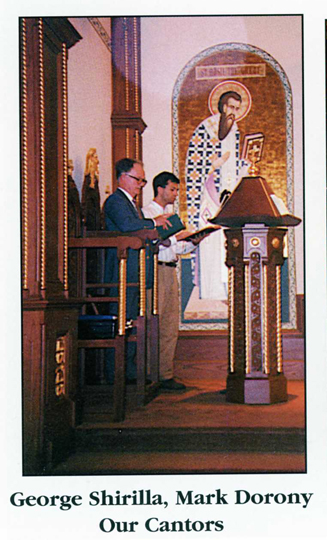
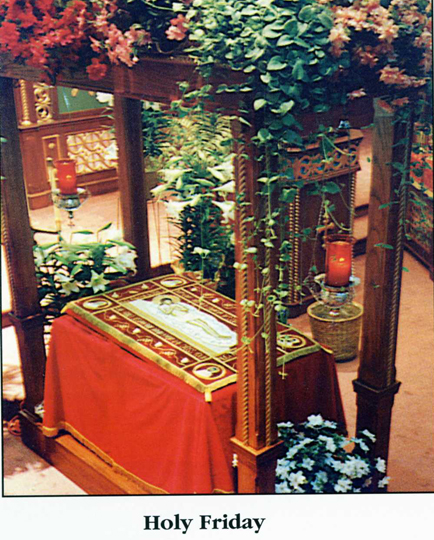
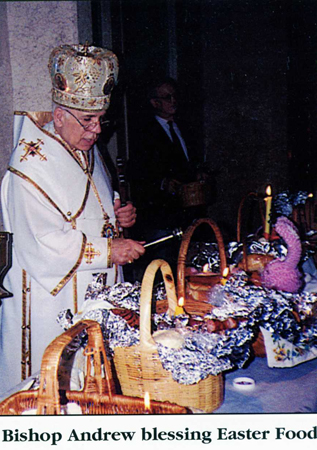
Saint Joseph Byzantine Catholic Church
Brecksville, Cuyahoga County, Ohio
TCC wishes to extend a special thank you to Father
Bruce
Riebefor offering the history and photos of his parish.
History
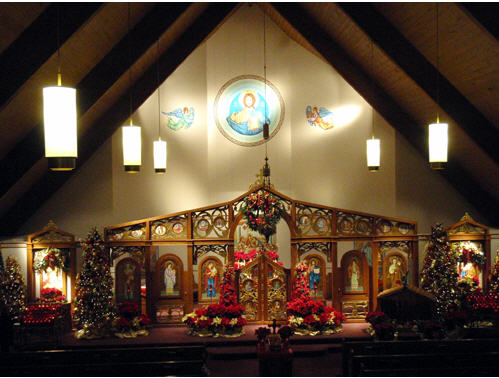 The history of St. Joseph Byzantine Catholic Church had its beginning in the Eastern Provinces of Slovakia near the foothills of the Carpathian Mountains. It was from the towns and villages of this part of Europe that the majority of the early members of St. Joseph parish immigrated to America to seek a new life at the turn of the century.
The history of St. Joseph Byzantine Catholic Church had its beginning in the Eastern Provinces of Slovakia near the foothills of the Carpathian Mountains. It was from the towns and villages of this part of Europe that the majority of the early members of St. Joseph parish immigrated to America to seek a new life at the turn of the century.
Although the history of the Rusyn immigrants who inhabited the city of Cleveland goes back to approximately 1898, the story of St. Joseph Church really begins on June 9, 1912. Records show that the first general meeting to organize a parish was held in Jelinka Hall on Aetna Rd. A decision was reached to purchase suitable lots where a church and school could be built. On June 16 of that year, the committee recommended property on Orleans Avenue be purchased. A contractor then was hired to start construction on the church. Within two months the church was completed at a cost of approximately $3,000.00! On January 7, 1913, the Divine Liturgy was offered for the first time.
Because of increasing membership, just nine years after the parish was founded, the congregation began discussing the needs of a new church. After raising the necessary funds, a motion was passed on September 17, 1928, that a new church be built. Due to various obstacles the new building was not completed until the pastorate of Father John Krusko (1931-1950). The old church was renovated and made into a recreational hall.
Being an inner city parish, the flight to suburbia was felt, and by the 1970's the congregation was growing smaller and smaller. The situation was quite bleak with the members barely able to meet the expenses for the church and school buildings.
Eventually the congregation decided to relocate. After many prayers, a 35 acre parcel was purchased from the Diocese of Cleveland for a moderate asking price. The Orleans property was sold to Zion Baptist Church and it was full steam ahead for building in Brecksville. During the planning and construction years the congregation worshipped at Brecksville High School. In late Autumn of 1984 the parish received permission to have a one day occupancy permit from the city of Brecksville and the first Divine Liturgy was celebrated.
In 2001 an Education Center and Activity Center were added. The congregation numbers three hundred families and has been labeled as one of the most vibrant Byzantine parishes in the country!
Jaslickari Christmas Program 2009
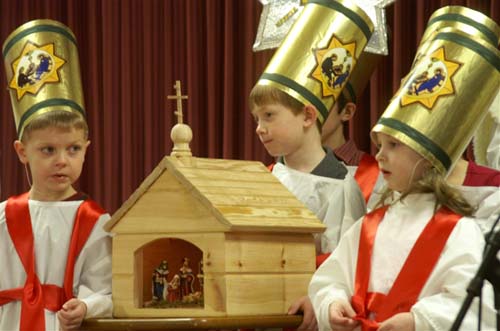
Father Bruce
Riebe blessing Easter baskets on Holy Saturday 2010
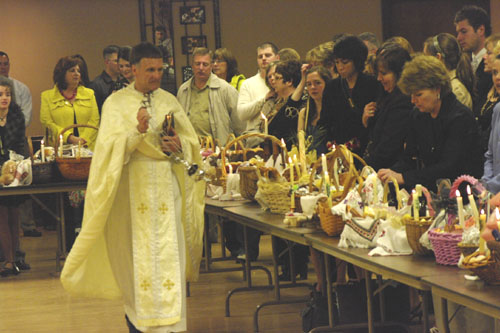
Father Bruce
Riebe performing a blessing of pets in 2011
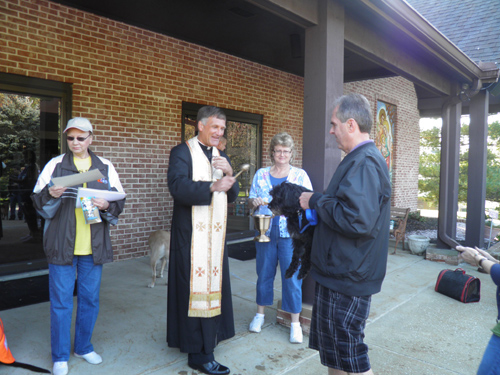
Saint Mary Byzantine Catholic Church
Parma (Cleveland), Cuyahoga County, Ohio
Church building and altar photo from Byzantine Catholic Church in America
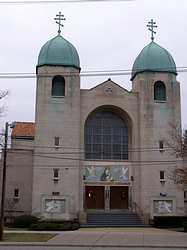 Saint Mary Byzantine Catholic church was organized by a small group of pious individuals who wanted to worship in their own faith. In 1938, a listing was compiled and 137 families were interested in this endeavor. Rev. Eugene Tabakovich, area priests and approximately 70 families gathered to take the next step in beginning a church. These people petitioned Bishop Basil Takach to accept their request so that construction could begin. Bishop Takach gave his permission and a new church was begun. After consultation the church was placed under the patronage of Mary the Dormition of the Mother of God.
Saint Mary Byzantine Catholic church was organized by a small group of pious individuals who wanted to worship in their own faith. In 1938, a listing was compiled and 137 families were interested in this endeavor. Rev. Eugene Tabakovich, area priests and approximately 70 families gathered to take the next step in beginning a church. These people petitioned Bishop Basil Takach to accept their request so that construction could begin. Bishop Takach gave his permission and a new church was begun. After consultation the church was placed under the patronage of Mary the Dormition of the Mother of God.
A wooden church was purchased which originally was a rented wooden shop at the corner of West 35th Street and Stickney Avenue. Also, three lots were included and a rectory and auditorium/recreation center were constructed. The first pastor was Father Stephen Petrick and he arrived on September 25, 1938. Father Stephen along with father Tabakovich and many area clergy blessed and dedicated the new church. The first resident priest assigned to the church was Father Daniel Ivancho.
As time went on the church building became too small for the members. On April 1, 1947 Father Nicholas Elko was installed as the new pastor. After plans were reviewed and implemented, groundbreaking for the new church took place on October 3, 1948. On May 9, 1949, Bishop Ivancho blessed the cornerstone of the new church. On April 30, 1950, Bishop Ivancho officiated at the solemn blessing and dedication of the new church. On November 15, 1952, Father Joseph Bodnar was installed as resident pastor and he served with distinction for 25 years.
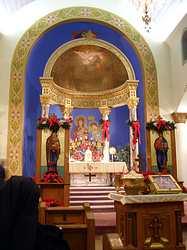 The church grew and on July 10, 1956 Bishop Elko gave his permission for the old church and rectory to be converted into a parochial school and convent. When these buildings were ready Bishop Elko blessed them on August 19, 1956. In 1958 Father Bodnar expanded the school and on July 15, 1958 Auxiliary Bishop Stephen Kocisko officiated at the groundbreaking ceremony. The parochial school was blessed and dedicated on February 28, 1960 and the Sisters of St. Basil from Uniontown, Pennsylvania were installed as teachers.
The church grew and on July 10, 1956 Bishop Elko gave his permission for the old church and rectory to be converted into a parochial school and convent. When these buildings were ready Bishop Elko blessed them on August 19, 1956. In 1958 Father Bodnar expanded the school and on July 15, 1958 Auxiliary Bishop Stephen Kocisko officiated at the groundbreaking ceremony. The parochial school was blessed and dedicated on February 28, 1960 and the Sisters of St. Basil from Uniontown, Pennsylvania were installed as teachers.
On January 20, 1981 the Producers Dairy was purchased and remodeled into a hall which began operating in November, 1982. The building houses a day care program, a pre-school program and two kindergarten classes of Saint Mary School. Saint Mary Hospitality House was opened on March 21, 1981. This vital community service is staffed by volunteers and offers hot meals to those of limited means in the community.
St. Mary Church celebrated their sixtieth anniversary on August 15, 1998. During the past sixty years much has been accomplished. St. Mary Church has produced vocations, educated children and helped people to grow in their Byzantine Catholic faith. St. Mary Byzantine Catholic Church looks forward to the future with faith and in service to the church and the local community.
Memories
.jpg)
1948 or 1949 Catechism class. Mr. Calvin (the cantor) on the left. Marti Timura is standing second to Mr. Calvin. If you would like to add your name please contact us at editors@tccweb.org
Courtesy of Marti (Timura) Worth
.jpg)
1950 St. Mary's Greek Catholic Church First Holy Communion Class
Father Nicholas Elko (Later Bishop Elko) in the center. Marti Timura (first girl on the right) If you would like to add your name please contact us at editors@tccweb.org
Courtesy of Marti (Timura) Worth
Saint Mary’s Byzantine Catholic Church
Youngstown, Mahoning County, Ohio
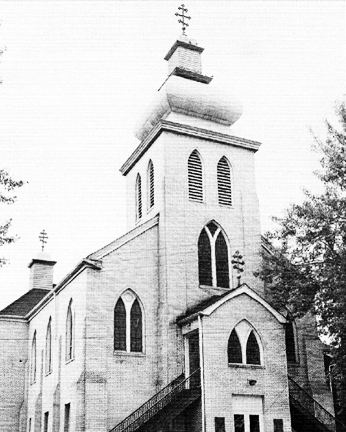 As immigrants came to the United States from the former Austro-Hungarian Empire, those who were Greek Catholic arrived in the thousands. The first priority after immigration was to seek employment. Youngstown, Ohio offered numerous jobs in coal mines, factories and transportation companies that dotted the length of the Erie Canal. Many Greek Catholics settled in the Steelton section of Youngstown. As their numbers expanded, ideas were set in motion to build a Greek Catholic Church. Greek Catholics in the neighboring towns of Haselton, Campbell, Newton Falls, Struthers and Warren participated and even those from Sharon, Pennsylvania, which was just across the state boarder, joined this endeavor. Funds were collected and plans drawn up. In December of 1899, property on Florence Street was purchased. The devout Greek Catholics gave finances and their skills which resulted in a wooden church being completed on July 4, 1900. Father Anthony Mhley blessed the new church and held the first Masses and other various services for the faithful.
As immigrants came to the United States from the former Austro-Hungarian Empire, those who were Greek Catholic arrived in the thousands. The first priority after immigration was to seek employment. Youngstown, Ohio offered numerous jobs in coal mines, factories and transportation companies that dotted the length of the Erie Canal. Many Greek Catholics settled in the Steelton section of Youngstown. As their numbers expanded, ideas were set in motion to build a Greek Catholic Church. Greek Catholics in the neighboring towns of Haselton, Campbell, Newton Falls, Struthers and Warren participated and even those from Sharon, Pennsylvania, which was just across the state boarder, joined this endeavor. Funds were collected and plans drawn up. In December of 1899, property on Florence Street was purchased. The devout Greek Catholics gave finances and their skills which resulted in a wooden church being completed on July 4, 1900. Father Anthony Mhley blessed the new church and held the first Masses and other various services for the faithful.
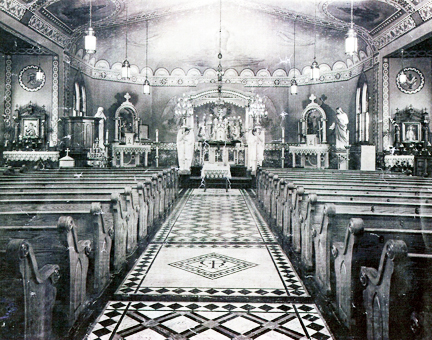
The parishioners did not stop at just a church. They constructed a rectory on church property and then, purchased more property on South Schenley Avenue. On September 13, 1902 this was used for their church cemetery which is still in use today. On January 19, 1907 another building on the side of the church was purchased as a home for their Cantor. Having a full time Cantor and paying for his residence was common in earlier days. The last resident of the home was Professor Michael Vuksta. He began a full choir and led them in chanting various services. He served Saint Mary’s for many years and was followed by Cantors George Hress and Thomas Hritzo. During the years 1900 to 1916 over a thousand children were baptized. This was a sign of a very large church which kept expanding due to immigration. In 1903 143 children were baptized, in 1907, 173 infants, in 1908, 165 infants, in 1909 153 infants. Sadly, as befell many Ruthenian Greek (Byzantine) Catholic parishes, members broke off to begin their own Greek Catholic churches in Youngstown itself (Saint Nicholas), Campbell (Saint Michael) and Warren (Saints Peter and Paul.) Two other ethnic parishes, Saint George in Youngstown was begun to exclusively serve Hungarian Greek Catholics and Holy Trinity in Youngstown served Ukrainian Greek Catholics. Even with the temporary decrease in membership, Saint Mary’s continued to grow. They added another floor to the church which previously had no basement and made other improvements. Sadly, Saint Mary’s like many Greek (Byzantine) Catholic churches was not spared religion issues that gripped the American church. Some members became rebellious and refused to stay loyal to their ancestral Catholic faith. They broke off, changed their religion and began Saint Michael’s Orthodox Church in Youngstown.
While these issues created tension and discord, once these problematic members left things improved. The parishioners of Saint Mary’s became even more determined that their church would prosper. In 1952 more property was purchased by Saint Mary’s, Saint George and Saint Nicholas in Youngstown to construct Our Lady of Perpetual Help Byzantine Catholic parochial school. The school was dedicated on May 14, 1956 and the former Oles mansion was converted into a convent for the Ukrainian Catholic Sister Servants of Mary Immaculate who first taught at the school. Later, the Sisters of Saint Basil the Great in Uniontown staffed the parochial school. The next project was the construction of a four-bay garage to house al the busses used to transport the children to the parochial school. Father John Ycoback is credited with having the vision to see this project became reality.
The parochial school had a very long tenure and closed long after others had been disbanded. Thousands of children were given a solid Byzantine Catholic parochial school education. The last school year was during the 2008-2009 term. To its credit, this was the Byzantine Catholic parochial school to close within the Archeparchy of Pittsburgh. The building and property were eventually sold and are now utilized by a social based mental health/addiction services agency.
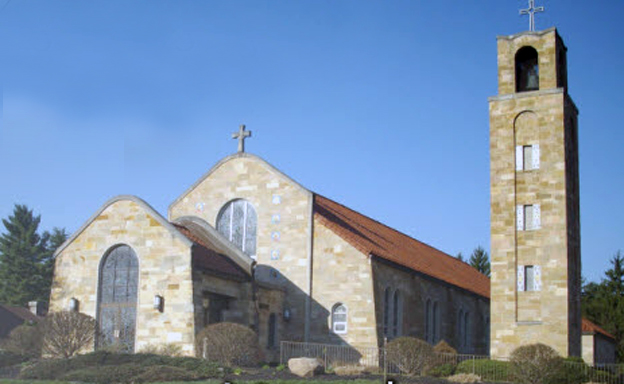 Along with the parochial school, in 1956 it was decided to relocate and construct a larger church. Father John Pohorlak managed every aspect of this new project in conjunction with the parishioners. In July of 1960, a modern larger church was finished on South Belle Vista Avenue. The church was constructed of light colored brick with red tiles for the roof. It has one tower and large stained glass windows. The basement was utilized for various bake and food sales, wedding receptions, baptism parties and other events. These functions helped to generate a good amount of income for the church. To raise funding to keep the parochial school operational, Father Ycoback began building a new social center. Steel mills which had employed original founders and members of the church had closed and many were without work during this time. A construction company was contracted to build the hall which would be called “Assumption Social Center” in honor of the Blessed Virgin Mary’s Assumption into heaven. These men joined in and helped to build the social hall. The hall is still utilized for various functions such as high school proms, Bingo games which bring in revenue for the church, senior citizen club meetings, Rosary Society meetings and is utilized as a local polling station during election days. Assumption Social Center is well known in the Youngstown area and offer their own catering and set up for any type of event.
Along with the parochial school, in 1956 it was decided to relocate and construct a larger church. Father John Pohorlak managed every aspect of this new project in conjunction with the parishioners. In July of 1960, a modern larger church was finished on South Belle Vista Avenue. The church was constructed of light colored brick with red tiles for the roof. It has one tower and large stained glass windows. The basement was utilized for various bake and food sales, wedding receptions, baptism parties and other events. These functions helped to generate a good amount of income for the church. To raise funding to keep the parochial school operational, Father Ycoback began building a new social center. Steel mills which had employed original founders and members of the church had closed and many were without work during this time. A construction company was contracted to build the hall which would be called “Assumption Social Center” in honor of the Blessed Virgin Mary’s Assumption into heaven. These men joined in and helped to build the social hall. The hall is still utilized for various functions such as high school proms, Bingo games which bring in revenue for the church, senior citizen club meetings, Rosary Society meetings and is utilized as a local polling station during election days. Assumption Social Center is well known in the Youngstown area and offer their own catering and set up for any type of event.
As the years passed on various upgrades and remodeling projects were implemented. An installation of a mosaic of the procession of the Apostles with the Virgin Mary, patroness of Saint Mary’s was installed in the sanctuary area. The church was remodeled to make it handicap-accessible and other improvements were made. In 2001, Father Richard Lambert, a vocation of Saint Mary’s, was appointed as pastor. Saint Mary’s Byzantine Catholic Church also has two other vocations, Monsignor Alexis Mihalik and Father James Regan. At present, Father Richard Lambert is still pastor and the church offers a Saturday night and Sunday morning Mass. He also covers Saint George Byzantine Catholic Church in Youngstown on Sundays. Saint Mary’s Byzantine Catholic Church is thriving when other churches have seen a major loss in membership. Their devotion to the Byzantine Catholic faith and all the hard work invested show this church has a very promising future.
Saint Nicholas Byzantine Catholic Church
Barberton, Summit County, Ohio
TCC wishes to extend a special thank you to Father Miron Kerul-Kmecfor offering the history and photos of his parish.
History
By James Senderak
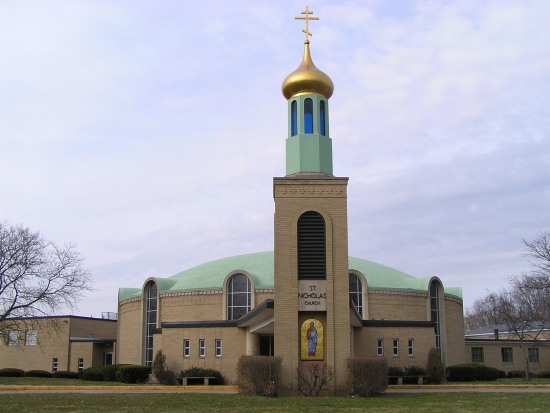 Saint Nicholas Church was founded by immigrants from both the Backa and Presov areas of the former Austro-Hungarian Empire. This group first organized a lodge in the Greek Catholic Union fraternal organization and then focused their attention on organizing themselves as a church congregation. The Articles of Incorporation were signed on June 26, 1916. The congregation was dedicated on July 6, 1916 under the patronage of St. Nicholas. On September 20, 1916 , the property for their church was purchased. While the church was being built, services were held in the downtown opera house. By the spring of 1918, the parishoners moved into their newly built church, located on the corner of First St. and Lake Ave. in downtown Barberton. Reverend Peter Popovich was brought to Barberton from Cleveland. He was a widower, with one daughter.
Saint Nicholas Church was founded by immigrants from both the Backa and Presov areas of the former Austro-Hungarian Empire. This group first organized a lodge in the Greek Catholic Union fraternal organization and then focused their attention on organizing themselves as a church congregation. The Articles of Incorporation were signed on June 26, 1916. The congregation was dedicated on July 6, 1916 under the patronage of St. Nicholas. On September 20, 1916 , the property for their church was purchased. While the church was being built, services were held in the downtown opera house. By the spring of 1918, the parishoners moved into their newly built church, located on the corner of First St. and Lake Ave. in downtown Barberton. Reverend Peter Popovich was brought to Barberton from Cleveland. He was a widower, with one daughter.
As the new industrial city of Barberton quickly grew and prospered, so too did the church of St. Nicholas. In 1935, five and a quarter acres of land were bought in the neighboring village of Clinton as a burial place for the deceased members of the parish. This ground was consecrated on September 6, 1936.
The visionary leadership of Rev. Michael Rapach led to the purchase in 1956 of 40 acres of land in Coventry Twp. By 1958, picnic grounds were developed on the new property and a modern indoor pavilion was built. Groundbreaking for a new church took place on Sunday, May 23, 1965. On Sunday, July 31 1966, the congregation celebrated the dedication of its new church, together with the 50th anniversary of its founding. On Sunday, April 14, 1974, at the celebration of the Feast of the Resurrection, they burned the mortgage.
Much was accomplished during the pastorate of Rev. Robert Yarnovitz. In 1976, the bell tower and front drive canopy were added to the church complex. Throughout the 1970's, the interior of the church was remodeled appropriate to the design for a Byzantine church.
A fruitful, cultural renaissance took place at St. Nicholas. The liturgical choir began to learn Rusin folk songs, performing at parochial and public affairs. In addition a dance group was organized in 1979, which took the name of The "Carpathians"’ in recognition of the geographical roots of the church founders. That same year, the St. George cultural-recreation center was built. This building houses classrooms for the growing ECF program, a library, kitchen and other amenities.
Furthermore, a Christmas Velija Supper for the parish family was implemented, as well as a breakfast of the Easter foods following the Saturday late night Resurrection matins and blessing of baskets.
In 1991 the city of Barberton celebrated its centennial, and St. Nicholas celebrated its 75th anniversay. First, an open house for the public was held on June 23 in conjunction with the Barberton Centennial Tour of Historic Churches. Later in the year, the parish’s Rusin heritage was displayed at the Barberton Centennial "Something Ethnic" International Festival. A specially organized dance group, and the church choir performed. A booth of ethnic cuisine and an exhibit of cultural and religious items displayed the heritage of St. Nicholas. The formal celebration for the congregation took place on Sunday, Sept. 22.
The Rev. Michael Felock instituted programs that enabled the children to be more actively involved in the life of the parish. Most noted was Student Sunday. The ECF students, together with their teachers would enter the church in procession and sit together as a group. The highschool and college graduates were honored with a special Divine Liturgy followed by a parish breakfast. Father Felock was nearing the end of his ninth year as pastor, when he was called by God to enter into his eternal reward on May 12, 1997.
Subsequent to his passing, St. Nicholas was administered for the next 11 years by several priests ordained by the Roman church; who were then accepted into the Byzantine Rite.
A grape vineyard was planted during the administration of Rev. Alan Kapron. The parish was able hold their first auction of wine from this vineyard in the Spring of 2008. Also, the Sunday Divine Liturgy began to be televised on the local CAT public access station.
For the first time in 42 years, with the appointment of the Rev. Fr. Miron Kerul’-Kmec, St. Nicholas Church would once again have a married priest as pastor. Father Miron is a native of Slovakia and has been in the United States for two years.
The past few years have proven to be difficult times for the parish family. Fr. Miron is uniquely able, as a father of his own family, to provide the confidence and stability needed by the parish of St. Nicholas; so that we may continue to perpetuate the spirit of human kindness. We will continue to strive, just as our (great-grand) parents did when they first arrived in this country, to live and honor the message of Jesus Christ, according to our beautiful Byzantine Rite.
Christmas 2008
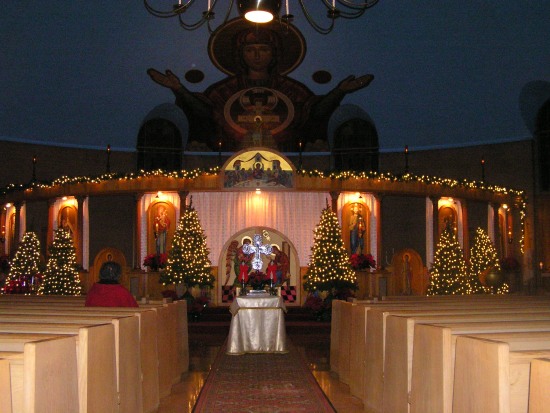
Good Friday 2009
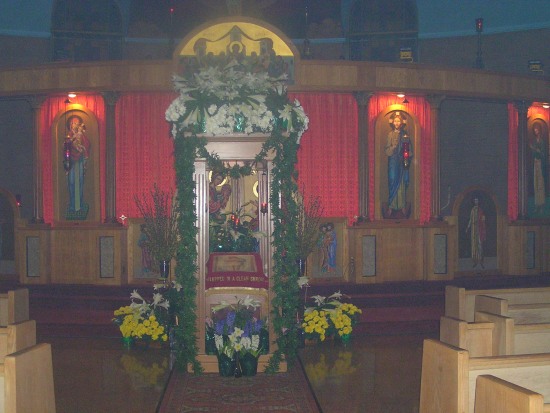
Prostopinije version of the Nicene Creed - St. Nicholas Byzantine Catholic Church, Barberton, Ohio (Youtube 2012)
Saint Nicholas Byzantine Catholic Church
Lorain, Lorain, Ohio
TCC wishes to extend a special thank you to Father Nicholas R. A. Rachford for offering the history and photos of his parish.
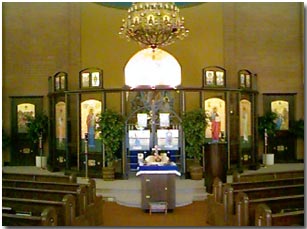 Saint Nicholas Byzantine Catholic Parish was established on Sept. 14, 1914, at the former location on Toledo Avenue in Lorain, Ohio. On that date, the first Byzantine Catholic bishop, Bishop Soter Ortinsky, dedicated the one-story structure of Saint Nicholas church. The pastor at the time was Father Basil Beretz.
Saint Nicholas Byzantine Catholic Parish was established on Sept. 14, 1914, at the former location on Toledo Avenue in Lorain, Ohio. On that date, the first Byzantine Catholic bishop, Bishop Soter Ortinsky, dedicated the one-story structure of Saint Nicholas church. The pastor at the time was Father Basil Beretz.
The people who were members of Saint Nicholas Parish in September, 1914, were the same ones who had initiated plans for a parish of the Ruthenian Byzantine Rite Catholics in 1905. Founders of this parish emigrated from the Austro-Hungarian Empire (today, the eastern-most section of Slovakia), to Lorain, in the last part of the 19th century and early part of the 20th century. For a few years they attended Saint Michael Hungarian Byzantine Catholic church on Wood Avenue (presently on Reeves Avenue), and for a brief time services were held in Kohlmeyer’s Hall on Pearl Avenue in Lorain.
During the pastorate of Father Andrew Pataki (former bishop of Parma, Ohio, and presently the bishop of Passaic, N.J.), a giant step was taken toward assuring the future of Saint Nicholas Parish. On Dec., 7, 1958, ground was broken for the construction of a parochial school. The cornerstone dedication took place on Sept. 20, 1959. Because of a fire originating in the altar boys’ sacristy in the church in March of 1960, the church was renovated by the Nobris Decorating Company of North Canton, Ohio. A festive dual observance took place on Sunday, June 1, 1960. Archbishop Nicholas T. Elko, blessed the newly-renovated church and the new Saint Nicholas school.
During the pastorate of Father Michael Felock, plans for a new complex became a reality. A ground-breaking ceremony was held on Jan. 25, 1981 on the present property at West 40th Street. The dedication and solemn blessing of the new Saint Nicholas complex was held on Sunday, Oct. 10, 1982. The interior of the church and sanctuary were renovated under the pastorate of Father David Hannes in 1994. Since then, a few seraphim and cherubim have been added to the ceiling surrounding the existing icons. A new mobile classroom has been set up so that the two mobile trucks could be removed from the property. A computer lab with a network connection to each classroom, has been created for the students and faculty of Saint Nicholas Academy.
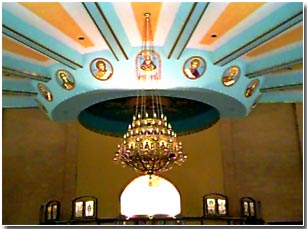 During the pastorate of Father James Batcha, 1995-2003, there was an upgrade of the computers in the school. This was part of the parish outreach program and evangelization. He also established a Web site for both the Academy and Saint Nicholas Parish. The site includes links to the Parma Eparchy’s Web site, the Byzantine home page and Saint Nicholas Academy home page with an alumni section where former students from Saint Nicholas Academy may register.
During the pastorate of Father James Batcha, 1995-2003, there was an upgrade of the computers in the school. This was part of the parish outreach program and evangelization. He also established a Web site for both the Academy and Saint Nicholas Parish. The site includes links to the Parma Eparchy’s Web site, the Byzantine home page and Saint Nicholas Academy home page with an alumni section where former students from Saint Nicholas Academy may register.
He also established a Father Michael Felock Memorial Fund in memory of the pastorate of Father Michael Felock, who served Saint Nicholas Parish from 1963-1987. He passed away on May 12, 1997. This fund was established on Oct. 4th, 1997 in order to raise funds for building maintenance and future construction.
On Oct. 15, 2003, Father Batcha began a new pastorate at St. John Chrysostom Parish, Columbus, Ohio, and Father Nicholas Rachford became the new pastor of St. Nicholas Parish.
In December, the first organizational meeting for a parish youth/young adults group took place. At a meeting in January, the members elected officers. There was an officers workshop in February and the first event was planned.
The month of May saw the formation of a Building and Maintenance Council. Its purpose is to review the needs of the physical properties of the parish, make recommendations for repairs and improvements and assist in carrying them out.
Over the next years the parish worked to implement its first three-year plan. At the end of that period, in 2008, the Parish Pastoral Council undertook an evaluation of parish life based on the parish mission statement. From this evaluation arose the 2009-2011 three-year plan. This plan calls for improvement in the liturgical life of the parish, further outreach to the parish youths, outreach in service to the surrounding community, various avenues of education and formation for adult parishioners and a revised ECF program structure.
Orthodox
SS. Peter & Paul Russian Orthodox Church
Lakewood, Cuyahoga County, Ohio
History
Special thanks to Rev. Father Timothy Sawchak for offering us this history from the 1992 SS Peter and Paul’s 75th Anniversary Book.
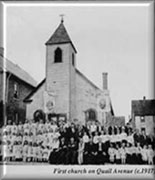
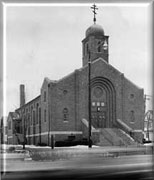
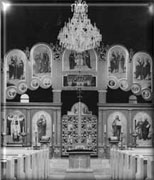
Seventy-Five Years of Orthodox Witness
The early history of Saints Peter and Paul Church in Lakewood is similar to that of most Orthodox parishes in the United States. Immigrants, mostly from the Sub-Carpathian Mountain region of what was then Austria-Hungary and the western part of Russia, left their homeland, their beloved parents and friends and came to our country to begin a new and hopefully, better life. They left all behind except their love of God and their devotion to their faith. Although many of them had been farmers in their native country, in America they settled mostly in the industrial areas such as Cleveland and its suburbs. After arriving, they not only maintained their culture and language, but also built their church before building their own homes so that they could continue with the spiritual legacy they had received from their fathers and mothers, the holy Orthodox Saints and Righteous and from the Holy Apostles. Today, as we think in retrospect of their sacrifices, our hearts are filled with praise for those who had the vision and certitude to establish this church. The history of Saints Peter and Paul is embodied in the contributions of its many diligent and faithful Orthodox Christians between 1917 and 1992. The church has added and still offers a great deal to the quality of life of its members. Therefore, the history represents the sacrifices of Saints Peter and Paul’s founding fathers and mothers, and the continued support extending down through time to todays parishioners.
On July 1, 1917, Rev. Joseph Takach met with a group of people and organized a parish in Lakewood, Ohio. The Saints Peter and Paul Russian Orthodox Greek Catholic parish was founded and incorporated on July 19, 1917. In 1918, the Reverend Dimitrius Darin served briefly as pastor at the wooden church on Quail Avenue, but this proved to be inadequate for the newly established congregation. Under the pastorship of Father Michael Dziama, who began serving the parish on August 11, 1918, the new parish moved to the Madison Avenue property where the church stands at present. On October 19, 1922, the cornerstone of the edifice was laid by His eminence Metropolitan Platon. With great spirit and determination these faithful people had planted the seeds of Orthodoxy in Lakewood. Reverend Michael Kostyk became our pastor on February 1, 1923, and during his pastorate the congregation grew and the 870-pound bell was purchased. Although the income of the parishioners was meager, on July 27, 1925, strengthened by their faith and with trust in the Divine Help, they undertook the task of building a new rectory and constructing an iconostas. The Lakewood "R" Club of the Federation of Russian Orthodox Clubs (FROC) was formed in 1928. This organization was active to the present day, offering its service and donations while advancing the religious, educational and social activities of the church. On March 11, 1928, Reverend Vladimir Levkanich came to serve the parish and remained for approximately two years. During his pastorate, the St. Mary’s Altar Society was formed. Many articles of necessity for the altar and church were donated and the ladies of the parish worked tirelessly to assist the church, and continue to do so to the present time.
Reverend George Barany was appointed past on July 1, 1930. During Father Barany’s administration, a fine choir was developed under the direction of his son, William. Despite the depression and economic distress of our country during this time, the parish flourished and continued to grow. The worshipers zealously participated in their cherished Orthodox services and the basement church was filled to capacity, including holy days. During the six-year pastorship of Reverend Andrew Chemushin, talk began of building a new edifice above the basement church. Father John Obletiloff, who was assigned to Saints Peter and Paul Church on December 2, 1942, instituted the envelope system for contributions, which proved to be extremely helpful in meeting the parish’s financial obligations. On September 1, 1947, Father Obletiloff resigned because of ill health. Reverend Stephen Rusiniak was appointed pastor on September 1, 1947 and the plans for a new church accelerated. A meeting was held on March 7, 1948 to draw up contracts to construct the new edifice. With the generous assistance of the American Russian National Brotherhood, $500,000 was borrowed by the congregation for the construction. Building of the new church began on June 24, 1948 and was completed in June 1950. On July 2, 1950, the parishioners realized one of their dreams when the dedication of the church took place. The growth of the parish continued and parishioners renewed their efforts to complete the interior of the church though donations of stained glass windows, pews, chandeliers, kitchen equipment, and other necessities. His Grace, Bishop John, officiated at a special ceremony to dedicate the altar and iconostas. Beginning in February 1958, Reverend Stephen Burdikoff served as interim pastor. Reverend John Miller, who was to serve as pastor for 29 years, was assigned to the parish and served his first Liturgy at SS Peter and Paul Church on May 4, 1959. During Father Miller’s pastorship the parishioners voted to have Liturgy sung in English on two Sundays every month. The parish home was repaired and refurnished, and with much of the work done by church members. Also, during this time 463 lots were purchased at Sunset Memorial Park Cemetery by the Parish Council, and a monument was installed to mark this area. Nine years after the dedication of the new church on October 25, 1959, the "burning of the mortgage" took place with the blessing and presence of His Eminence, Archbishop John of Chicago.
The parish was honored that two sons of the parish were called to serve our Lord in His Vineyard. Rev. Samuel (Harry) Garula and Rev. Andrew (Drew) Clements. The Men’s Club of Saints Peter and Paul was formed in July 1962. Besides the good fellowship that the club promotes, the men generously donate their time, energy, and financial support to beautify and maintain the church. In 1969, on the thirty-fifth anniversary of Father Miller’s ordination, the parish members gave a testimonial dinner for him. The Holy Synod of Bishops awarded Father John a Mitre on November 9, 1975, which was presented by His Eminence, Archbishop John. Continuing their commitment to beautify the church and the parish house, the parishioners made many physical improvements and continue to do so. These improvements include: gold-leafing of the iconostas; varnishing of all wood in the church; addition of folding partitions in the church hall to make Sunday School classrooms available; addition of an Angel Room for babies and small children; covering of the stained glass windows with Lexan; purchase of a house adjoining the church, demolishing it and creating a surfaced parking lot; erecti8on of a new storage building; installation of a new air conditioning and heating system; replacement of the old dome with a new large golden cupola and four smaller domes; addition of a wall and fence surrounding the property; replacement of carpeting; complete redecoration and refurnishing of the rectory. In 1984, the parish members helped Father Miller to celebrate the fiftieth year of his ordination. Father Miller retired in 1987. After an interim period during which Reverend Father Vasile Hategan served as substitute pastor, Father George Breyan was appointed and served as our pastor until 1990. During his pastorate several items were donated to the church including a new Gospel, new baptismal font, a memorial table, and new carpeting for the altar and center aisle.
In Orthodox worship, music has always been an integral part and source of beauty and inspiration. As the parish developed both congregational and choral signing were important. A unique position in many of our churches belongs to the cantor. Saints Peter and Paul has been blessed in having several dedicated and well-trained cantors who were very important in the liturgical life of our church. The church was also fortunate in having several outstanding choir directors. For the last twenty-nine years, our church’s choir has been under the adept leadership and talents of Mr. Peter Uhren. The dedicated members under his direction have consistently done an exceptional job of augmenting the beauty of our services. In July 1990, Rev. John Adamcio and his family were officially welcomed to Saints Peter and Paul Church. In his short time with us, he has done much to make our church a visible presence in the Lakewood Community. This has been accomplished in part by our participation in the Lakewood Christian Center food drive, Lakewood Festival, and monthly contributions to St. Herman’s House of Hospitality. The culinary heritage of our church is being preserved through Baba’s Kitchen, which cooks, bakes and sells savory delights. There has been tangible growth in church membership the last two years. The Restoration Fund was established in November 1991 to continue the parish’s efforts to restore, mainstream, and improve church property. The two-phase program is hoping to raise $61,000.00 In August 1992, the first major project, re-pointing of the beautiful stained glass windows was completed. All of this has been accomplished though the hard work, devotion and self-sacrifice of the church leaders and officers, past and present, and through the love and faith of ALL Orthodox Christians of this parish. Despite stumbling blocks along the way, the spirit of Saints Peter and Paul parish has been unconquerable. This is more than just another day of celebration. It is a pledge of a new generation to carry on and hold fast the cherished beliefs of Orthodoxy. This is our sacred obligation.
Since this history was written in 1992 there have been two priests who served SS Peter and Paul’s after Father John Adamcio. One was Father Dimitri Voytilla and the other is the present pastor of SS Peter and Paul Russian Orthodox Church, Rev. Father Timothy Sawchak.
